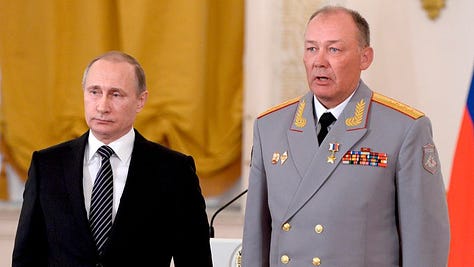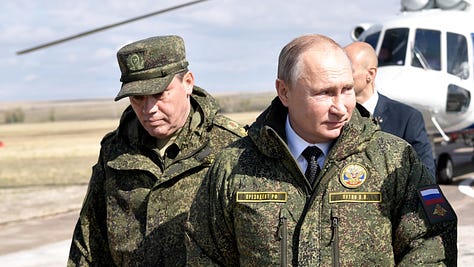Operational Adaptation by the Russians
In-theatre evolution to support the eastern and southern campaigns



In an article published in April, I examined Russian tactical adaption during their special military operation (or what Putin has now acknowledged as a war) in Ukraine. But while there is a view among many that the‘Russians are stupid’, they have shown an ability – admittedly in a very uneven way - to learn and adapt.
The Russian military in Ukraine has demonstrated a profound intellectual and moral corruption. Despite this it is necessary to understand where the Russian are adapting and to assume that they may continue to do so in the coming months. In exploring different aspects of Russian military adaptation, we might assist the Ukrainian armed forces to understand the different tactical and operational risks they might face in the months ahead. And also, how they might also interfere with Russian adaptation to make them less operationally effective.
In this article, I explore operational adaptation in the Russian forces since their large-scale invasion of Ukraine in February 2022. Operational adaptation is the learning and change that takes place where military campaigns are planned, executed and won or lost.
In the early 1920s, the Soviets analysed the combat experiences of the First World War and their own Civil War. They concluded that the complexity of modern warfare had changed older definitions about different levels of war. As David Glanz has explored in his writings on Soviet developments in the operational art, these theorists proposed that the planning and conduct of tactical operations could no longer produce strategic success in war. In the future, an intermediate level was required--a level the Soviets called “operational”. Henceforth, strategic victory could only be possible through cumulative operational success achieved in successive operations.
A. A. Svechin defined this new approach in his 1927 book called Strategy. Svechin wrote that “normally the path to final strategic aims is broken up into a series of operations subdivided by time and by more or less sizeable pauses, comprising differing sectors of a theater of war and differing sharply as a consequence of different intermediate aims.”
Many draw a distinction between the operational level of war, and operational art. The operational level, described in the UK joint doctrinal publication on the subject is “the level of operations at which campaigns and major operations are planned, conducted and sustained to accomplish strategic objectives within theatres or areas of operations.” Operational art on the other hand, according to B.A. Friedman in On Operations is “the disciplines required to place military forces in an advantageous position to employ tactics to achieve strategic effects.”
Therefore, in exploring operational adaptation, we are reviewing an adaptive process that occurs above the level of battles and tactical concerns, but beneath the layer where military strategies are produced, tested, implemented and evolved. This operational adaptation is an institutional capacity to learn and then improve military effectiveness for the employment of major forces in the achievement of strategic aims in a theatre of war.
Keep reading with a 7-day free trial
Subscribe to Futura Doctrina to keep reading this post and get 7 days of free access to the full post archives.



